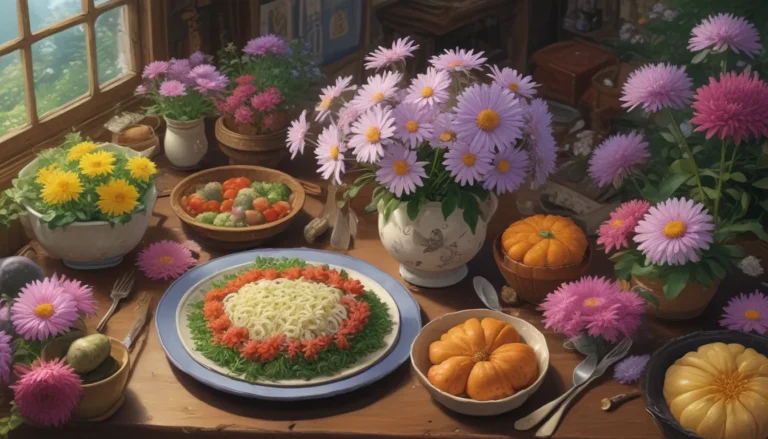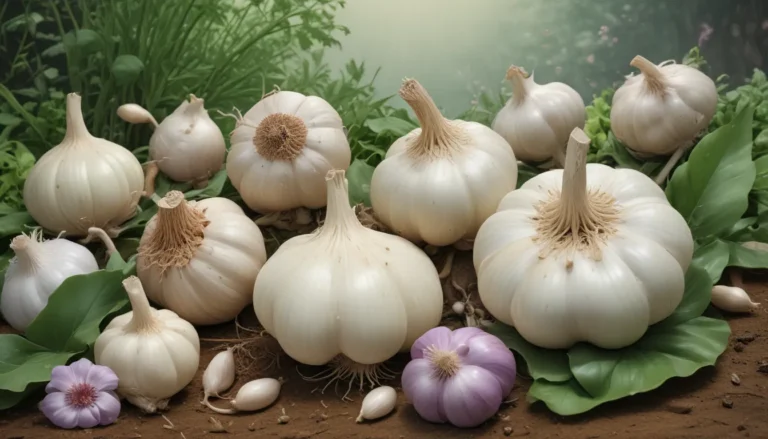The Ultimate Guide to Planting and Growing Oregano

Are you a fan of flavorful Mediterranean dishes? If so, you’ll likely appreciate the robust, earthy taste of oregano, scientifically known as Origanum vulgare. This bushy, woody-branched perennial is a member of the mint family, Lamiaceae, and is a popular herb used in various cuisines for its aromatic flavor.
If you enjoy cooking Italian-American dishes like pizza, grilled meats, dressings, and sauces, you’re probably familiar with oregano. In fact, Americans consume over 14 million pounds of oregano every year, highlighting its widespread popularity.
Embrace the Mediterranean Flavor
Oregano hails from the Mediterranean region and the Middle East, where it thrives in warm climates. It grows to be one to two feet tall and two feet wide, producing oval, fragrant leaves and delicate blooms in pink, lavender, or white during mid to late summer.
This versatile herb is hardy in USDA Zones 5-10 and can even be grown as an annual in colder regions. So, let’s explore how you can cultivate this flavorful herb in your garden and enjoy its culinary benefits.
What You’ll Discover in this Guide
- Cultivation and History – Propagation – How to Grow – Growing Tips – Cultivars to Select – Managing Pests and Disease – Harvesting – Preserving – Recipes and Cooking Ideas – Quick Reference Growing Guide
While oregano is often confused with marjoram due to their similar names, it’s essential to recognize their botanical differences. Marjoram is a separate species known as O. majorana, distinct from oregano’s O. vulgare variety.
Additionally, other herbs like Mexican oregano and Cuban oregano share common names but belong to different plant families. Mexican oregano is Lippia graveolens, while Cuban oregano is Plectranthus amboinicus, each offering unique flavors and scents.
Cultivation and Historical Significance
With its origins in Greece, oregano holds a rich history dating back to ancient Greek civilizations. Dubbed the “joy of the mountain” by the Greeks, oregano symbolized joy, good luck, and health, and was often grown near homes to ward off evil spirits.
Romans recognized the culinary value of oregano and carried it across the lands they conquered. However, it wasn’t until American soldiers returned from World War II with a taste for Italian cuisine that oregano found widespread popularity in the US.
Plant Propagation Made Easy
If you’re eager to grow oregano in your garden, you have several propagation options to choose from:
From Seed
- Directly sow seeds outdoors once temperatures reach 70°F – Place seeds on the soil surface without covering – Thin seedlings to 8 inches apart after germination – Consider starting seeds indoors for early growth
From Cuttings
- Take 4-5 inch stem cuttings in spring – Remove lower leaves and place in water or soilless mix – Transplant rooted cuttings after 4-5 weeks – Keep in a bright location away from direct sun
Through Division
- Divide plants in spring or fall when the soil is warm – Separate plant root balls into multiple sections – Replant divisions in pots or a different garden area
Growing Oregano: A Flavorful Journey
Similar to vacationers in Cabo San Lucas, oregano loves full sun and well-drained soil with a neutral pH. This low-maintenance herb tolerates hot, dry conditions and requires minimal watering, making it ideal for both garden beds and containers.
Oregano can serve as a ground cover, border plant, or rock garden accent, providing culinary and ornamental value. To encourage bushy growth, trim or harvest leaves regularly, especially before the plant goes to seed in late summer for reseeding.
Tips for Successful Growing
- Opt for full sun exposure – Avoid overwatering to prevent root rot – Regularly trim plants to maintain a bushy form – Allow flowering to produce seeds for future growth
Selecting Oregano Cultivars
When choosing oregano varieties for your garden, consider these popular options:
Cleopatra
- Winner of the 2015 All-America Selections Edible Award – Features a light peppermint flavor and silvery-gray foliage – Excellent for ground cover or container growth
Greek
- Known for its spicy, earthy flavor – Includes pretty white blooms when allowed to flower – Available in different quantities for planting
Hot and Spicy
- A fiery version of Greek oregano with an intense, bitter taste – Ideal for adding a kick to salsas and chili dishes – Mounded growth with delicate pink flowers
Italian
- Distinct for its mildly aromatic flavor – Larger leaves than the Greek variety – Suitable for sauces, soups, and stews
Explore more oregano varieties in our follow-up guide, “11 of the Best Culinary and Ornamental Oregano Varieties,” to select the perfect cultivar for your kitchen garden.
Combatting Pests and Diseases
Although oregano is generally resistant to pests and diseases, a few common issues to watch for include:
Insects
- Aphids: Use water blasts or insecticidal soap – Leafminers: Control with neem oil spray – Spider Mites: Treat with neem oil and monitor for webbing
Diseases
- Mint Rust: Look for pustules on leaves and treat with fungicide – Severely infected plants may require removal and disposal
Harvesting and Preserving Oregano
Once plants are at least 45 days old, begin harvesting leaves or sprigs for culinary use. For long-term storage, dry oregano leaves using a dehydrator or by hanging stems in a cool, dry location.
Store dried leaves in airtight containers away from light and heat to preserve flavor. Alternatively, infuse oregano into oil for diverse culinary applications like salad dressings or bread dipping.
Cooking with Oregano: Flavorful Delights
Delight your taste buds with zesty oregano-infused recipes like grilled eggplant rollatini, chicken gyros, or citrus roasted chicken. Pair oregano with garlic, tomatoes, and other herbs for savory Mediterranean-inspired dishes.
Explore these recipes and more on our sister site, Foodal, to elevate your culinary creations with the aromatic essence of oregano.
A Fragrant Favorite in Your Garden
Embrace the Mediterranean charm of oregano in your garden and kitchen with its easy-to-grow nature and versatile culinary applications. Whether used fresh or dried, oregano adds a burst of flavor to dishes and enhances the sensory experience of cooking.
Share your oregano growing experiences and recipes in the comments below, and let’s continue to celebrate the joy of this mountain herb together.
For more herb gardening insights, check our comprehensive guides on growing rosemary, sage, horehound, and parsley to expand your home herb garden with more delectable flavors.
Photos by Fanny Slater & Kelli McGrane With additional writing and editing by Allison Sidhu and Clare Groom.





